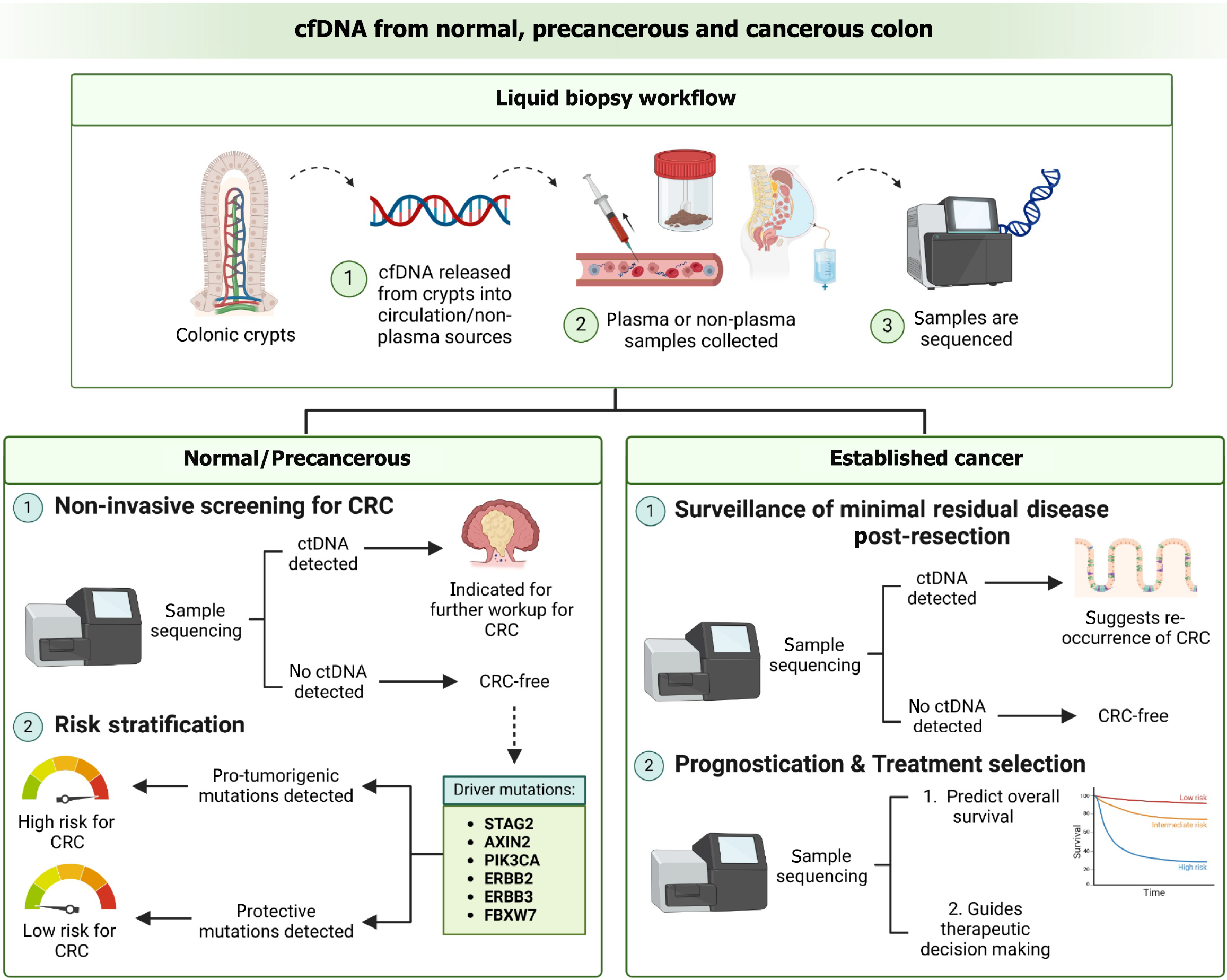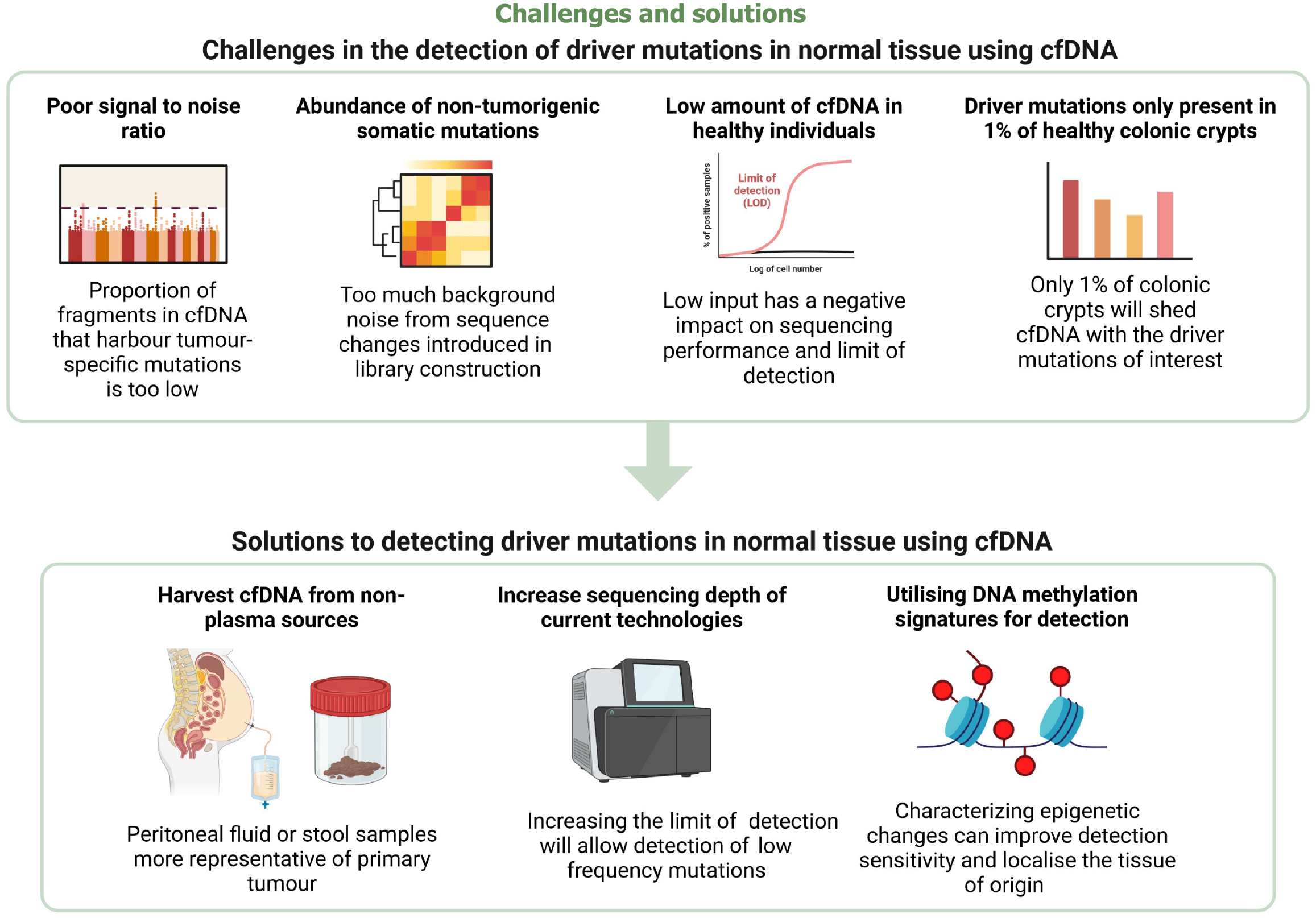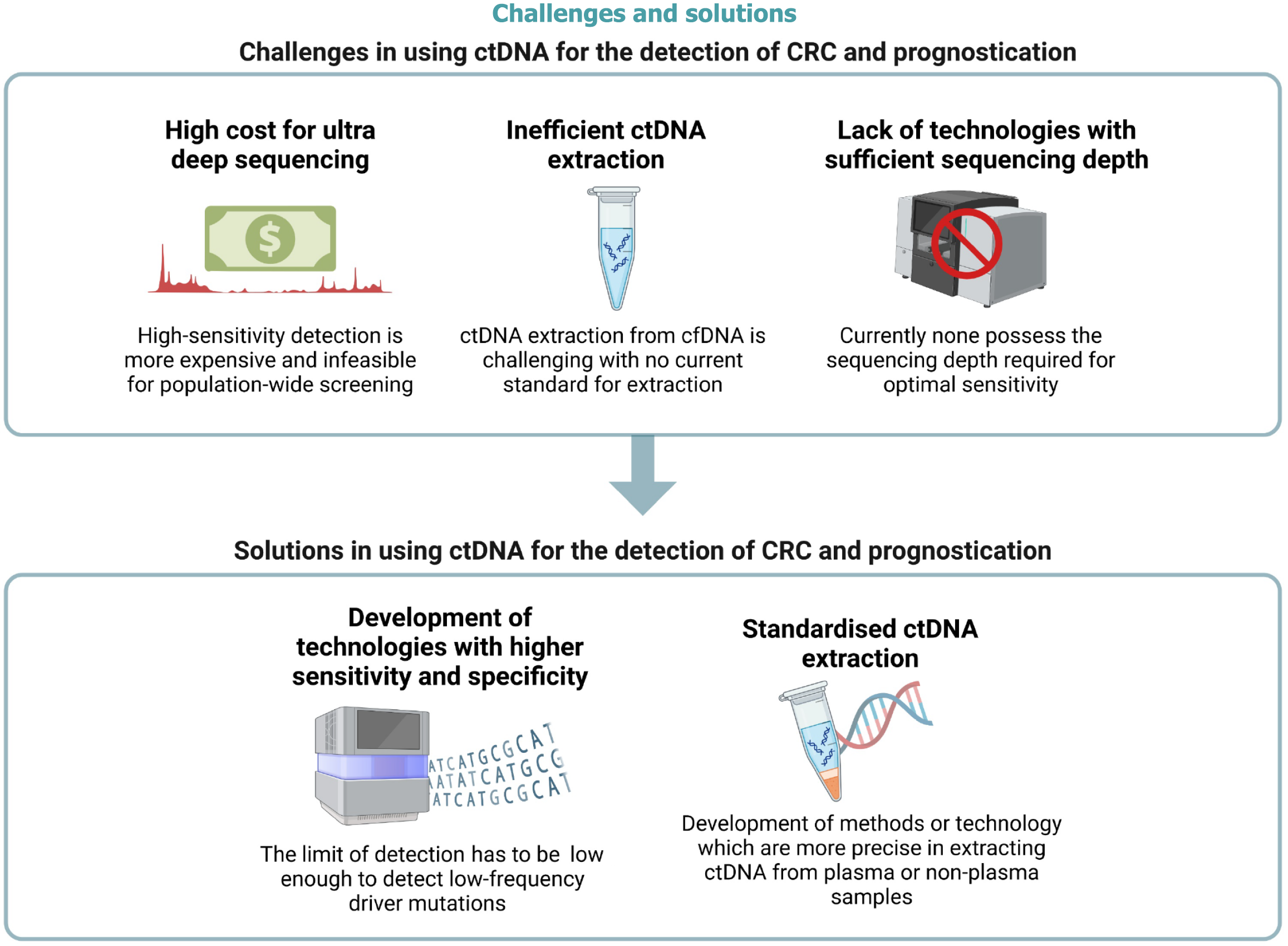Copyright
©The Author(s) 2025.
World J Gastrointest Oncol. Aug 15, 2025; 17(8): 106663
Published online Aug 15, 2025. doi: 10.4251/wjgo.v17.i8.106663
Published online Aug 15, 2025. doi: 10.4251/wjgo.v17.i8.106663
Figure 1 The role of cell free DNA in patients with normal, precancerous or cancerous colon.
Figure was created with Biorender.com. Cell free DNA can play different roles in different patient populations. In presymptomatic individuals, it can be used to screen for colorectal cancer (CRC) by detecting the presence of circulating tumour DNA in plasma or non-plasma samples. Even if patients are proven to be CRC-free, they can be evaluated for driver mutations which would predict their risk of developing CRC. In individuals with CRC however, cell free DNA can be used for the surveillance of minimal residual disease post-surgery, to prognosticate, or to inform therapeutic decision making. CRC: Colorectal cancer; cfDNA: Cell free DNA; ctDNA: Circulating tumour DNA.
Figure 2 The challenges of using cell free DNA for the detection of driver mutations in normal tissue and proposed solutions.
Figure was created with Biorender.com. Challenges preventing the adoption of cell free DNA (cfDNA) for individuals with normal colonic epithelium include poor signal-to-noise ratio, the abundance of non-tumorigenic background mutations, the low amount of cfDNA found in healthy individuals, and that only 1% of healthy colonic crypts possess the driver mutations of interest. Potential solutions that can be explored are to harvest cfDNA from non-plasma sources like the stool and peritoneal fluid, increase the sequencing depth of current technologies or to analyze epigenetic changes instead. cfDNA: Cell free DNA.
Figure 3 The challenges of using circulating tumour DNA for the detection and prognostication of colorectal cancer and proposed solutions.
Figure was created with Biorender.com. Challenges preventing the adoption of cell free DNA to detect and prognosticate colorectal cancer include the exorbitant cost of deep sequencing which makes it infeasible for population-wide screening, inefficient circulating tumour DNA extraction from plasma or non-plasma sources, and the lack of technologies with sufficient sequencing depth. Potential solutions that can be explored are to channel more resources into the development of sequencing technologies with sufficient depth and sensitivity, and to formulate an effective and standardized method of circulating tumour DNA extraction. CRC: Colorectal cancer; ctDNA: Circulating tumour DNA.
- Citation: Chua MWE, Chan DKH. Challenges and proposed solutions to the adoption of cell free DNA in screening, detecting and prognosticating colorectal cancer. World J Gastrointest Oncol 2025; 17(8): 106663
- URL: https://www.wjgnet.com/1948-5204/full/v17/i8/106663.htm
- DOI: https://dx.doi.org/10.4251/wjgo.v17.i8.106663











